Acousto-Optic–Based Wavelength-Comb-Swept Laser for Extended Displacement Measurements
Abstract
:1. Introduction
2. Generation of Comb-Like Spectral Laser Source with Narrow Spectral Linewidth
3. Experimental Setups of WCSL Source and Interferometric Displacement Measurement
3.1. Experimental Setup of WCSL Source
3.2. Experimental Setup for Interferometric Displacement Measurement
4. Laser Performance and Interferometric Displacement Measurement Results
4.1. Comparison of Output Performance between Conventional WSL and Proposed WCSL
4.2. Comparison between Interferometric Displacement Measurements with Conventional WSL and Proposed WCSL
5. Conclusions
Acknowledgments
Author Contributions
Conflicts of Interest
References
- Soller, B.J.; Gifford, D.K.; Wolfe, M.S.; Froggatt, M.E. High resolution optical frequency domain reflectometry for characterization of components and assemblies. Opt. Express 2005, 13, 666–674. [Google Scholar] [CrossRef] [PubMed]
- Yasuno, Y.; Madjarova, V.D.; Makita, S.; Akiba, M.; Morosawa, A.; Chong, C.; Sakai, T.; Chan, K.-P.; Itoh, M.; Yatagai, T. Three-dimensional and high-speed swept-source optical coherence tomography for in vivo investigation of human anterior eye segments. Opt. Express 2005, 13, 10652–10664. [Google Scholar] [CrossRef] [PubMed]
- Huber, R.; Wojtkowski, M.; Taira, K.; Fujimoto, F.G.; Hsu, K. Amplified, frequency swept lasers for frequency domain reflectometry and OCT imaging: Design and scaling principles. Opt. Express 2005, 13, 3513–3528. [Google Scholar] [CrossRef] [PubMed]
- Jung, E.J.; Park, J.-S.; Jung, M.Y.; Kim, C.-S.; Eom, T.J.; Yu, B.-A.; Gee, S.; Lee, J.; Kim, M.K. Spectrally-sampled OCT for sensitivity improvement from limited optical power. Opt. Express 2008, 16, 17457–17467. [Google Scholar] [CrossRef] [PubMed]
- Tsai, T.-H.; Zhou, C.; Adler, D.; Fujimoto, J. Frequency comb swept laser. Opt. Express 2009, 17, 21257–21270. [Google Scholar] [CrossRef] [PubMed]
- Tomasz, B.; Maciej, W.; Maciej, S.; Anna, S.; Robert, H.; Andrzej, K. Improved spectral optical coherence tomography using optical frequency comb. Opt. Express 2008, 16, 4163–4176. [Google Scholar]
- Zhang, Y.; Zhang, Y.; Zhao, Q.; Li, C.; Yang, C.; Feng, Z.; Deng, H.; Zhou, E.; Xu, X.; Wong, K.K.Y.; Yang, Z.; et al. Ultra-narrow linewidth full C-band tunable single-frequency linear-polarization fiber laser. Opt. Express 2016, 24, 26209–26214. [Google Scholar] [CrossRef] [PubMed]
- Siddiqui, M.; Vakoc, B.J. Optical-domain subsampling for data efficient depth ranging in Fourier-domain optical coherence tomography. Opt. Express 2012, 20, 17938–17951. [Google Scholar] [CrossRef] [PubMed]
- Tozburun, S.; Siddiqui, M.; Vakoc, B.J. A rapid, dispersion-based wavelength-stepped and wavelength-swept laser for optical coherence tomography. Opt. Express 2014, 22, 3414–3424. [Google Scholar] [CrossRef] [PubMed]
- Masahiro, U.; Yuichi, O.; Seiji, T.; Takashi, S.; Yuzo, S.; Junya, K.; Kazunori, N.; Shogo, Y. Improvement of coherence length in a 200 kHz swept light source with a KTa1−xNbxO3 deflector using an etalon. Appl. Phys. Express 2013, 12, 122501. [Google Scholar]
- Eigenwillig, C.M.; Biedermann, B.R.; Palte, G.; Huber, R. K-space linear Fourier domain mode locked laser and applications for optical coherence tomography. Opt. Express 2008, 16, 8916–8937. [Google Scholar] [CrossRef] [PubMed]
- Jeon, M.; Kim, J.; Jung, U.; Lee, C.; Jung, U.; Boppart, S.A. Full-range k-domain linearization in spectral-domain optical coherence tomography. Appl. Opt. 2011, 50, 1158–1163. [Google Scholar] [CrossRef] [PubMed]
- Hu, Z.; Rollins, A.M. Fourier domain optical coherence tomography with a linear-in-wavenumber spectrometer. Opt. Lett. 2007, 32, 3525–3527. [Google Scholar] [CrossRef] [PubMed]
- Han, G.-H.; Cho, S.-W.; Park, N.S.; Kim, C.-S. Electro-optic swept source based on AOTF for wavenumber-linear interferometric sensing and imaging. Fibers 2016, 4, 14. [Google Scholar] [CrossRef]
- Wang, Q.; Zhang, Y.; Liu, W.-H. Fabry-perot etalon filter. Proc. SPIE 2006, 6027. [Google Scholar] [CrossRef]
- Zhang, D.; Zhao, J.; Yang, Q.; Liu, W.; Fu, Y.; Li, C.; Luo, M.; Hu, S.; Hu, O.; Wang, L. Compact MEMS external cavity tunable laser with ultra-narrow linewidth for coherent detection. Opt. Express 2012, 20, 19670–19682. [Google Scholar] [CrossRef] [PubMed]
- Merlier, J.D.; Mizutani, K.; Sudo, S.; Sato, K.; Kudo, K. Wavelength channel accuracy of an external cavity wavelength tunable laser with intracavity wavelength reference etalon. J. Lightwave Technol. 2006, 24, 3202–3209. [Google Scholar] [CrossRef]
- Sato, K.; Mizutani, K.; Sudo, S.; Tsuruoka, K.; Naniwae, K.; Kudo, K. Wideband external cavity wavelength-tunable laser utilizing a liquid-crystal-based mirror and an intracavity etalon. J. Lightwave Technol. 2007, 25, 2226–2232. [Google Scholar] [CrossRef]
- Dong, X.; Ngo, N.Q.; Shum, P.; Tam, H.-Y.; Dong, X. Linear cavity erbium-doped fiber laser with over 100 nm tuning range. Opt. Express 2003, 11, 1689–1694. [Google Scholar] [CrossRef] [PubMed]
- Huber, R.; Wojtkowski, M.; Fujimoto, J.G. Fourier domain mode locking (FDML): A new laser operating regime and applications for optical coherence tomography. Opt. Express 2006, 14, 3225–3237. [Google Scholar] [CrossRef] [PubMed]
- Yamashita, S.; Takubo, Y. Wide and fast wavelength-swept fiber lasers based on dispersion tuning and their application to optical coherence tomography. Photonic Sens. 2013, 3, 320–331. [Google Scholar] [CrossRef]
- Salvade, Y.; Przygodda, F.; Rohner, M.; Polster, A.; Meyer, Y.; Monnerat, S.; Gloriod, O.; Llera, M.; Matthey, R.; Francisco, J. D.; et al. Interferometric measurements beyond the coherence length of the laser source. Opt. Express 2016, 24, 21729–21743. [Google Scholar] [CrossRef] [PubMed]
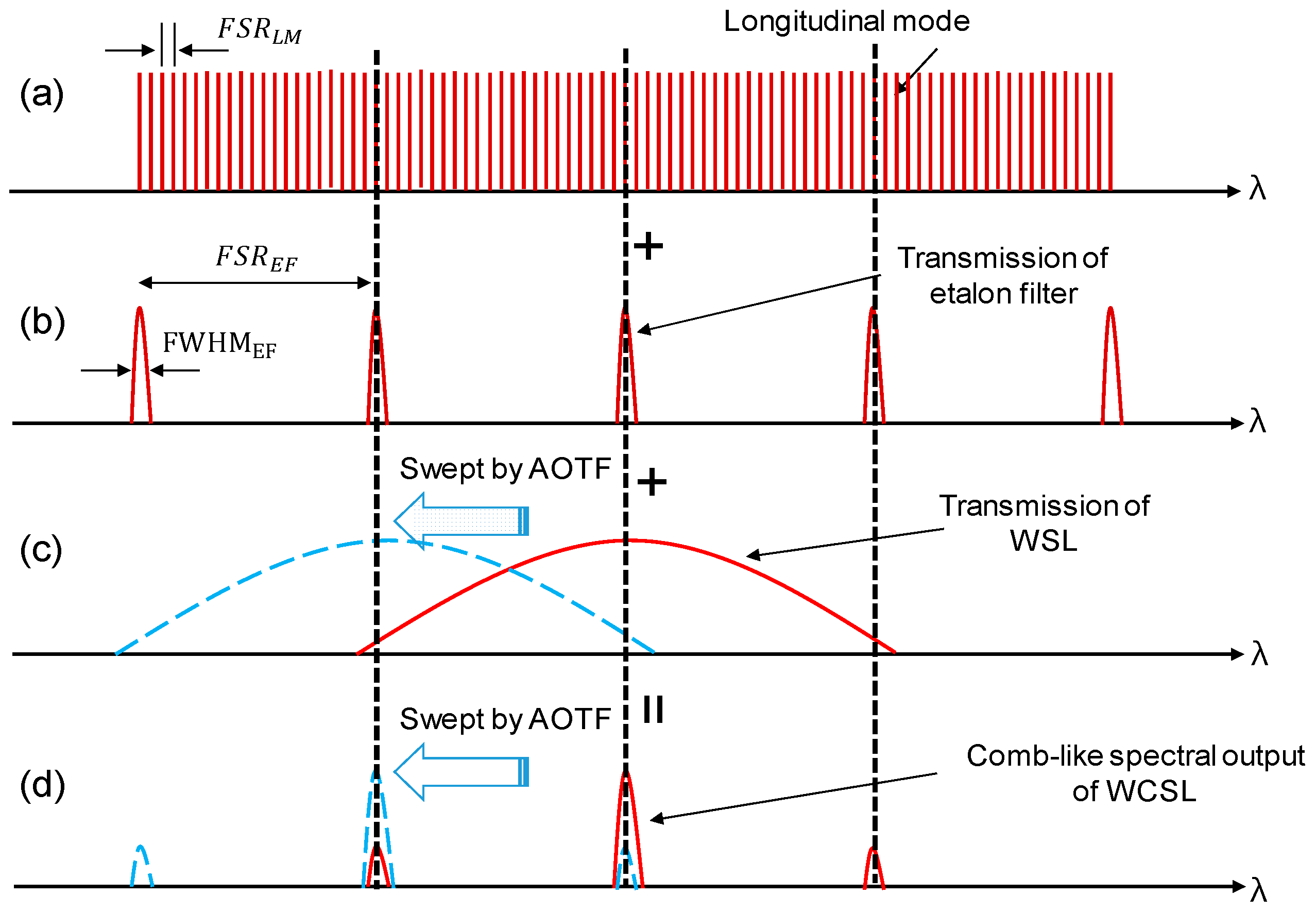
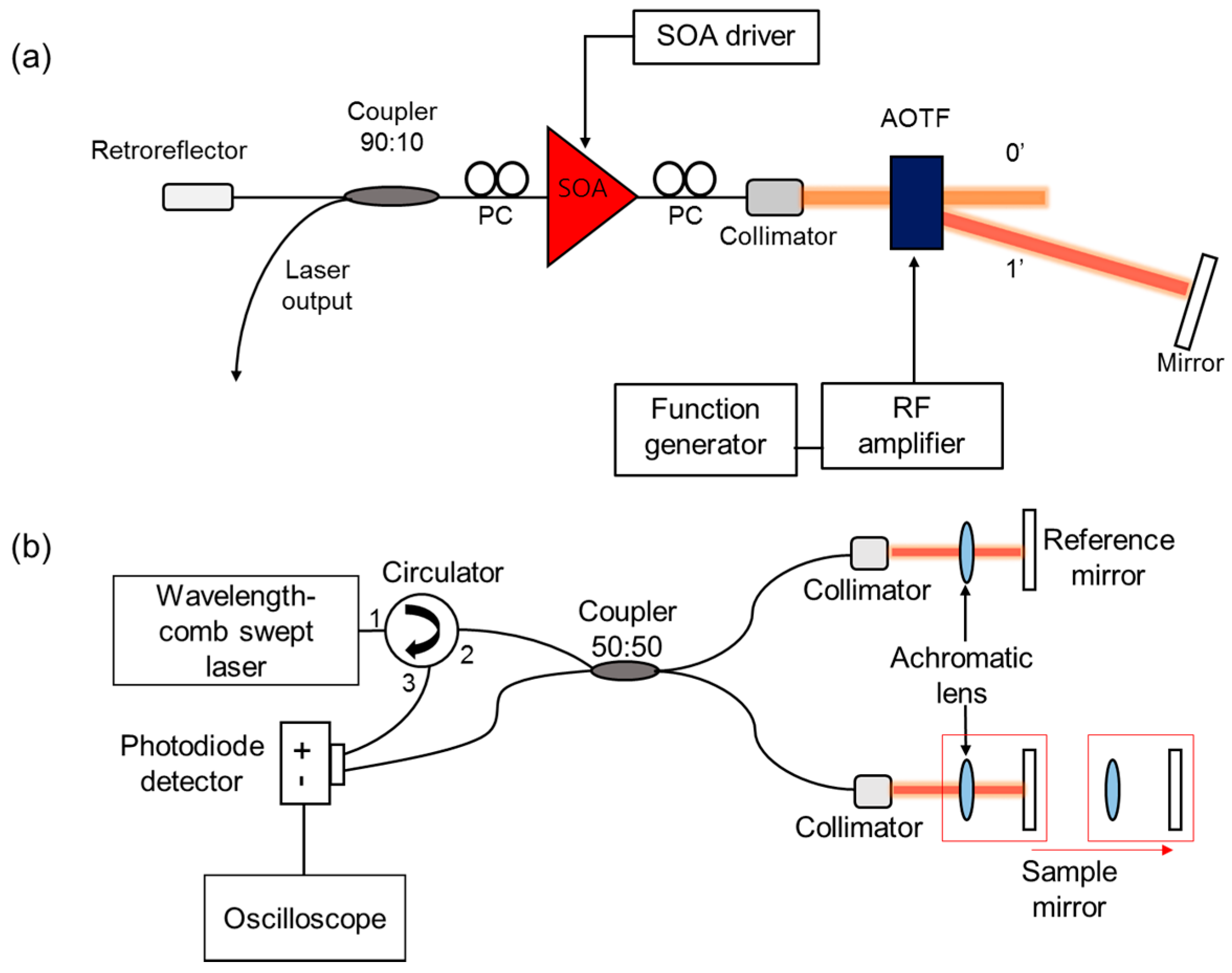
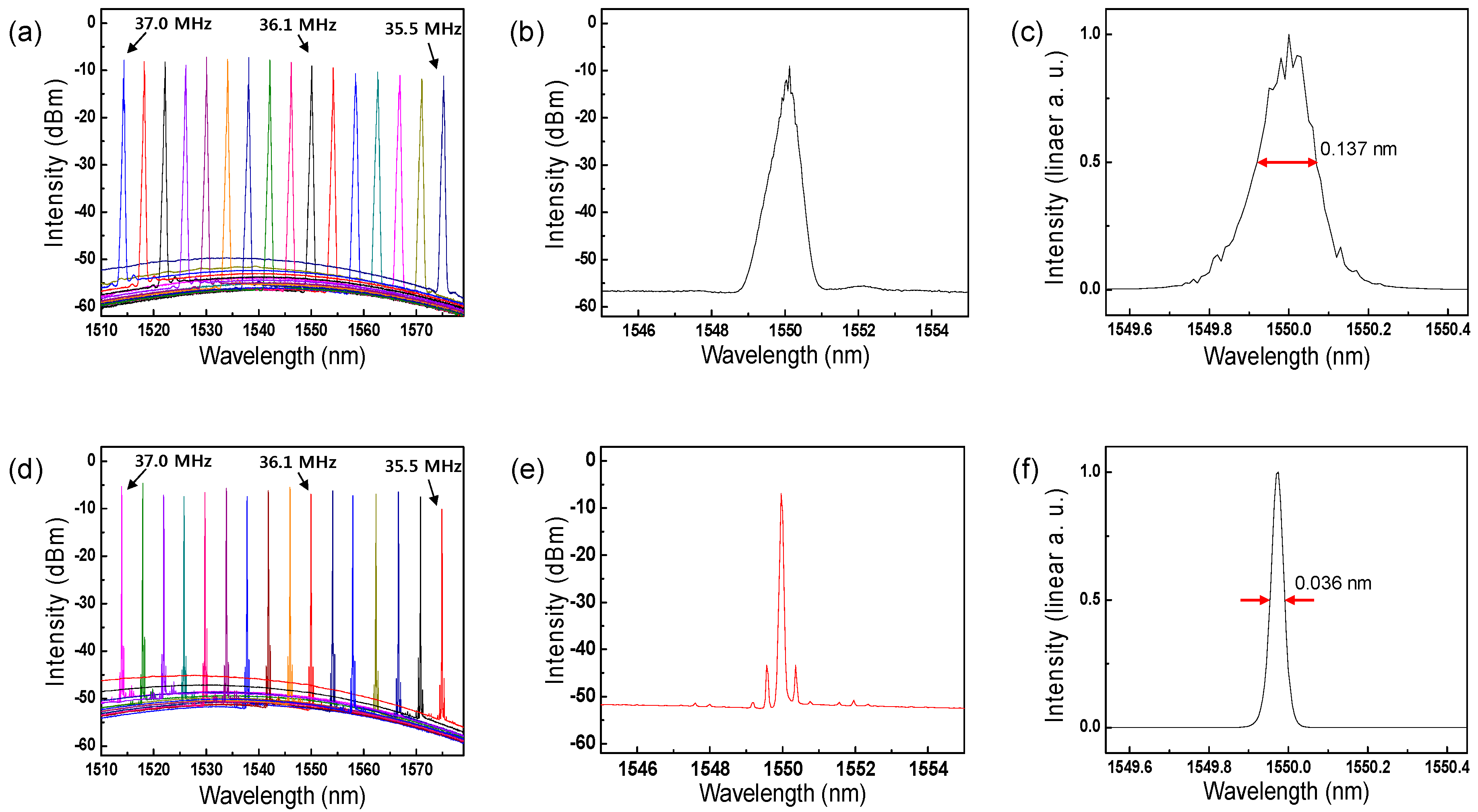
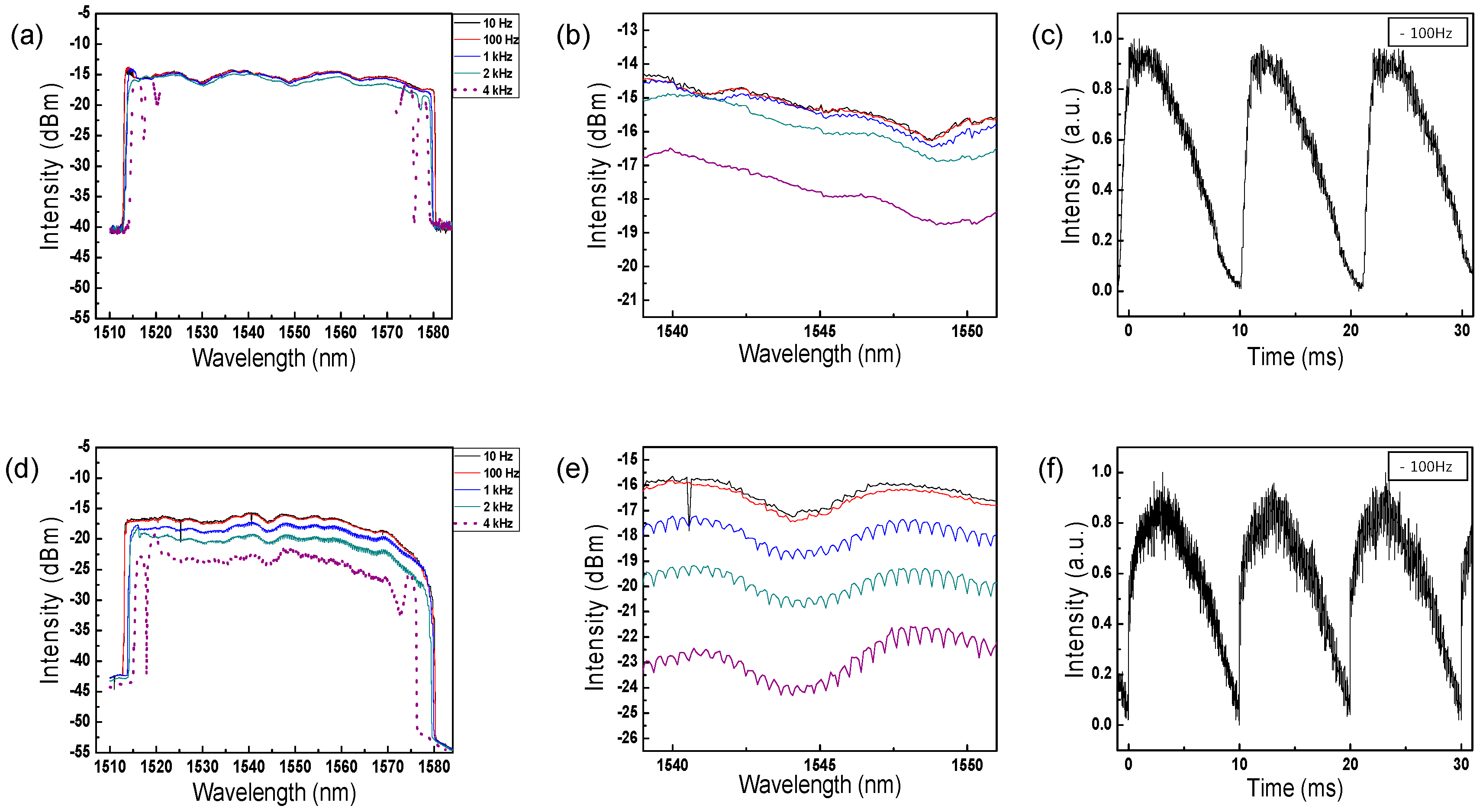
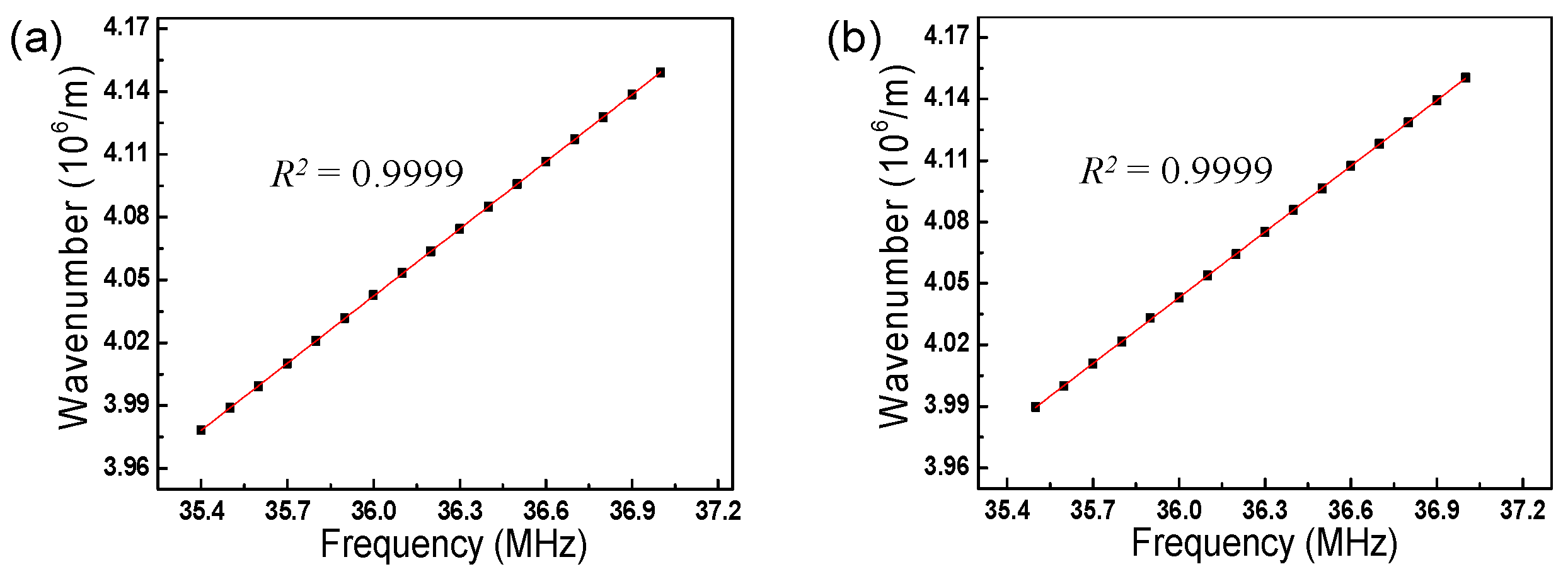
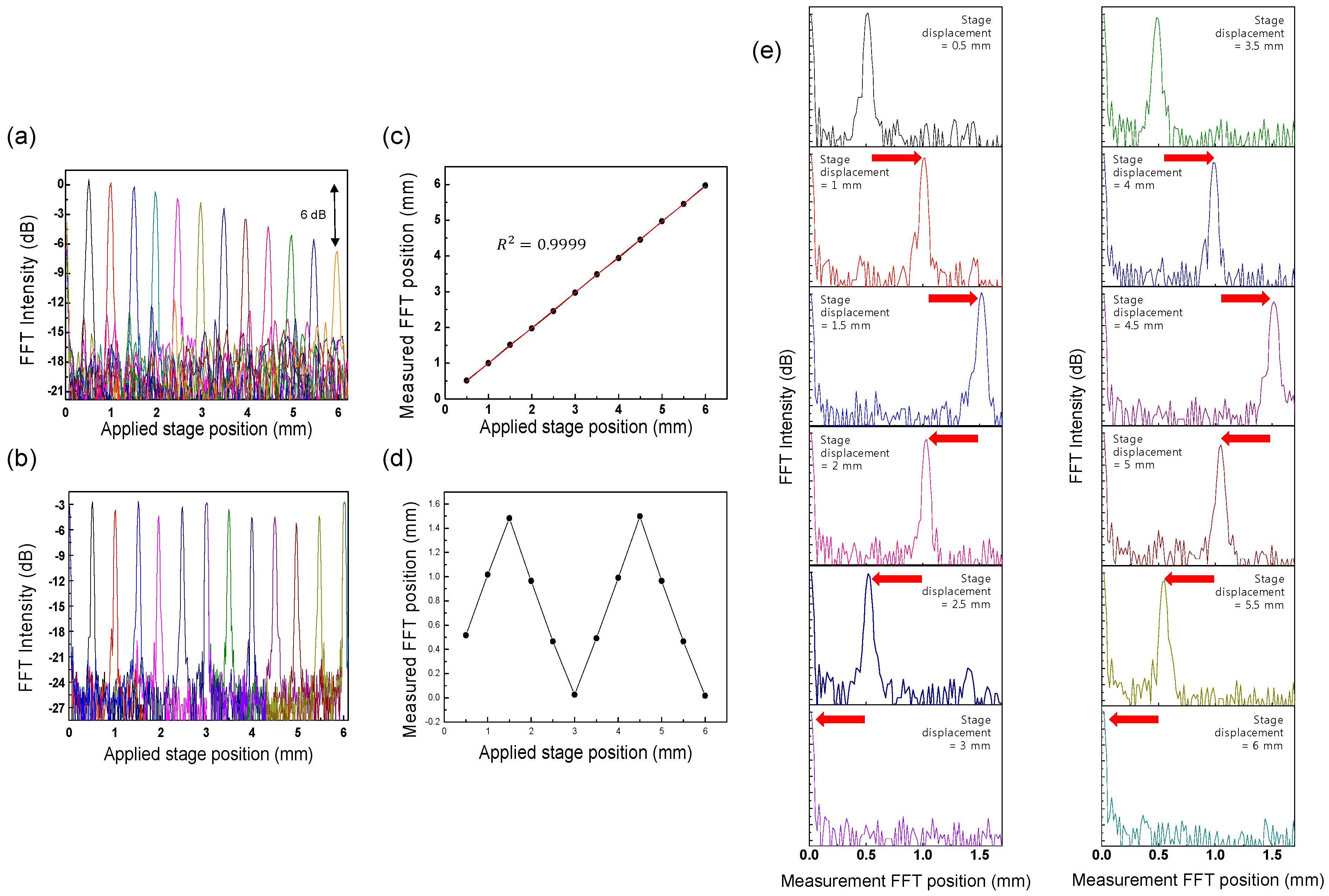
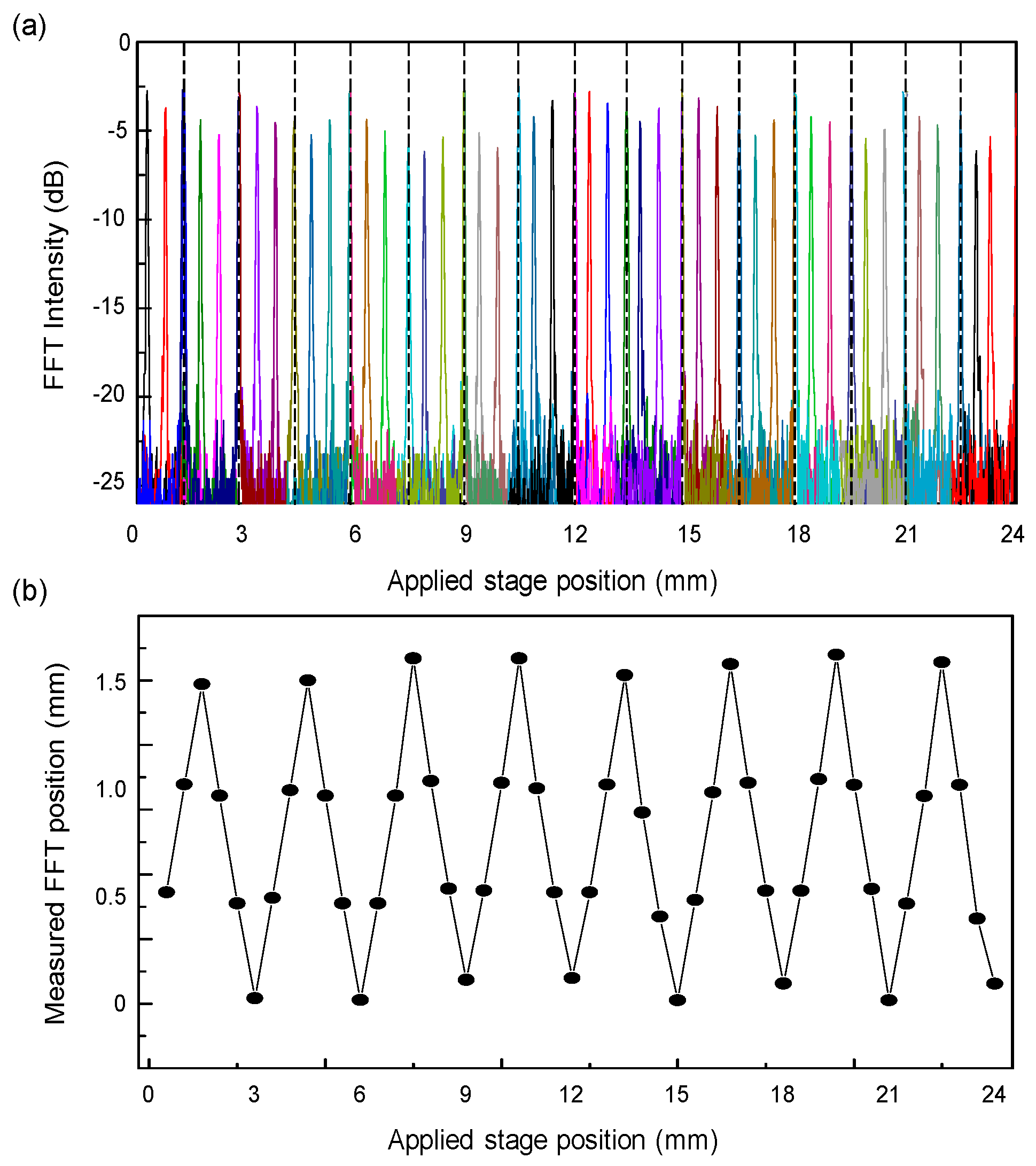
© 2017 by the authors. Licensee MDPI, Basel, Switzerland. This article is an open access article distributed under the terms and conditions of the Creative Commons Attribution (CC BY) license (http://creativecommons.org/licenses/by/4.0/).
Share and Cite
Park, N.S.; Chun, S.K.; Han, G.-H.; Kim, C.-S. Acousto-Optic–Based Wavelength-Comb-Swept Laser for Extended Displacement Measurements. Sensors 2017, 17, 740. https://doi.org/10.3390/s17040740
Park NS, Chun SK, Han G-H, Kim C-S. Acousto-Optic–Based Wavelength-Comb-Swept Laser for Extended Displacement Measurements. Sensors. 2017; 17(4):740. https://doi.org/10.3390/s17040740
Chicago/Turabian StylePark, Nam Su, Soo Kyung Chun, Ga-Hee Han, and Chang-Seok Kim. 2017. "Acousto-Optic–Based Wavelength-Comb-Swept Laser for Extended Displacement Measurements" Sensors 17, no. 4: 740. https://doi.org/10.3390/s17040740
APA StylePark, N. S., Chun, S. K., Han, G.-H., & Kim, C.-S. (2017). Acousto-Optic–Based Wavelength-Comb-Swept Laser for Extended Displacement Measurements. Sensors, 17(4), 740. https://doi.org/10.3390/s17040740




